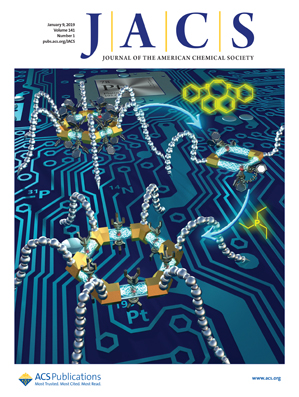|
Authors |
Abstract Plasmonic nanoparticles can strongly interact with adjacent photosensitizer molecules, resulting in a significant alteration of their singlet oxygen (1O2) production. In this work, we report the next generation of metal-enhanced 1O2 nanoplatforms exploiting the lightning rod effect, or plasmon hot spots, in anisotropic (nonspherical) metal nanoparticles. We describe the synthesis of Rose Bengal-decorated silica-coated silver nanocubes (Ag@SiO2-RB NCs) with silica shell thicknesses ranging from 5 to 50 nm based on an optimized protocol yielding highly homogeneous Ag NCs. Steady-state and time-resolved 1O2 measurements demonstrate not only the silica shell thickness dependence on the metal-enhanced 1O2 production phenomenon but also the superiority of this next generation of nanoplatforms. A maximum enhancement of 1O2 of approximately 12-fold is observed with a 10 nm silica shell, which is among the largest 1O2 production metal enhancement factors ever reported for a colloidal suspension of nanoparticles. Finally, the Ag@SiO2-RB NCs were benchmarked against the Ag@SiO2-RB nanospheres previously reported by our group, and the superior 1O2 production of Ag@SiO2-RB NCs resulted in improved antimicrobial activities in photodynamic inactivation experiments using both Gram-positive and -negative bacteria model strains. |
Altmetrics
|
|
Journal Journal of the American Chemical Society, 2019, vol. 141, no. 1, p. 684-692 |
||
|
Date of publication 2018-12-09 |
||
|
DOI |



